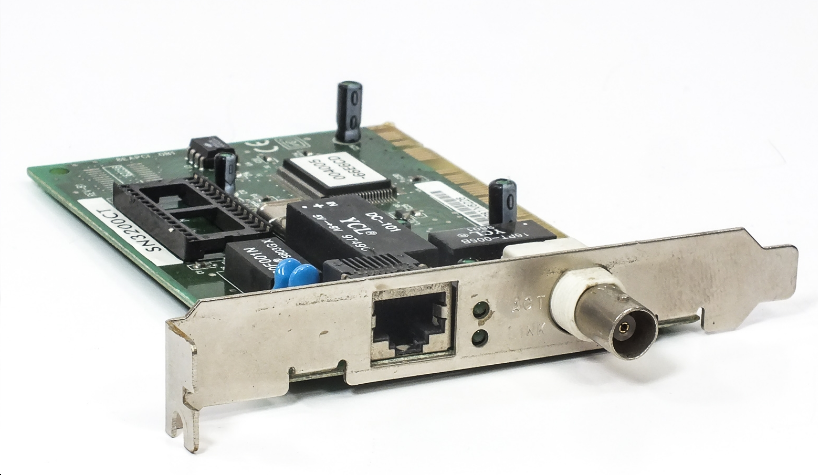- Related articles
- How to choose the fastest network card for Intel chipset server adapter?
- Optical Transceivers for Cisco SG250-10P-K9-EU Switch
- All Cisco ONS-SE-GE-BXU's information (List price, Specs, Datasheet PDF, Compatibility mat
- Optical Transceivers for Cisco SF350-48P-K9-UK Switch
- How to install NIC card?
- Decryption of new technologies: PCI-E SSD and NVME standards
- All Cisco DS-SFP-FC10G-SW's information (List price, Specs, Datasheet PDF, Compatibility m
- What Condition is Required to Enable Layer 3 Switching?
- Optical Transceivers for Cisco SLM2048T-UK Switch
- Optical Transceivers for Cisco WS-C2960+24TC-S Switch

The BNC was originally designed for military use and has gained wide acceptance in video and RF applications to 2 GHz. The BNC uses a slotted outer conductor and some plastic dielectric on each gender connector. This dielectric causes increasing losses at higher frequencies. Above 4 GHz, the slots may radiate signals, so the connector is usable, but not necessarily stable up to about 11 GHz. Both 50 ohm and 75 ohm versions are available. The BNC connector is used for signal connections such as:
- Analog and serial digital interface video signals
- Amateur radio antennas
- Aerospace electronics (avionics)
- Test equipment.
The BNC connector is used for composite video on commercial video devices. Consumer electronics devices with RCA connector jacks can be used with BNC-only commercial video equipment by inserting an adapter. BNC connectors were commonly used on 10base2 thin Ethernet network cables and network cards. BNC connections can also be found in recording studios. Digital recording equipment uses the connection for synchronization of various components via the transmission of word clock timing signals.

BNC Connector Network Card
The BNC (Bayonet Neill–Concelman) connector is miniatures quick connect/disconnect radio frequency connector used for coaxial cable. It features two bayonet lugs on the female connector; mating is fully achieved with a quarter turn of the coupling nut. BNC connectors are used with miniature-to-subminiature coaxial cable in radio, television, and other radio-frequency electronic equipment, test instruments, and video signals. The BNC was commonly used for early computer networks, including ARCnet, the IBM PC Network, and the 10BASE2 variant of Ethernet. BNC connectors are made to match the characteristic impedance of cable at either 50 ohms or 75 ohms. They are usually applied for frequencies below 4 GHz and voltages below 500 volts.
Similar connectors using the bayonet connection principle exist, and a threaded connector is also available. United States military standard MIL-PRF-39012 entitled Connectors, Coaxial, Radio Frequency, General Specification for (formerly MIL-C-39012) covers the general requirements and tests for radio frequency connectors used with flexible cables and certain other types of coaxial transmission lines in military, aerospace, and spaceflight applications.
BNC Connector Types
BNC connectors are most commonly made in 50 and 75 ohm versions, matched for use with cables of the same characteristic impedance. The 75 ohm types can sometimes be recognized by the reduced or absent dielectric in the mating ends but this is by no means reliable. There was a proposal in the early 1970s for the dielectric material to be coloured red in 75 ohm connectors, and while this is occasionally implemented, it did not become standard. The 75 ohm connector is dimensionally slightly different from the 50 ohm variant, but the two nevertheless can be made to mate. The 50 ohm connectors are typically specified for use at frequencies up to 4 GHz and the 75 ohm version up to 2 GHz. A 95 ohm variant is used within the aerospace sector, but rarely elsewhere. It is used with the 95 ohm video connections for glass cockpit displays on some aircraft.
Summary
The BNC was originally designed for military use and has gained wide acceptance in video and RF applications to 2 GHz. The BNC uses a slotted outer conductor and some plastic dielectric on each gender connector. This dielectric causes increasing losses at higher frequencies. Above 4 GHz, the slots may radiate signals, so the connector is usable, but not necessarily stable up to about 11 GHz. Both 50 ohm and 75 ohm versions are available.





















































